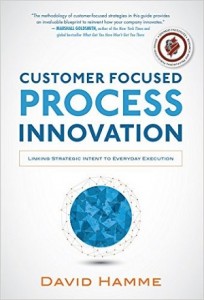There is a formula that HR professionals can use to help assess why people do or don’t mobilise well in crises, and it can be used successfully in a change management process, according to Dave Hanna
The plant manager in a troubled automobile factory gave a presentation in an all-hands meeting, reviewing the plant’s poor results that were forcing employee layoffs.
“Ladies and gentlemen,” the plant manager said in conclusion, “the figures don’t lie.”
The next speaker on the program was the union president. He began by saying, “Yes, ladies and gentlemen, the figures don’t lie. But, remember, liars figure!”
This experience highlights a significant challenge: how do you mobilise a workforce to change how it operates to turn around its performance?
The Centre for Workplace Leadership (CWL) at the University of Melbourne, in a 2016 survey of managers and employees in 2,700 organisations, found that 40 per cent of Australian companies are missing their targets for Return on Investment (ROI) and profitability. One third of these companies underperform on their sales targets. Furthermore, the CWL study showed:
- Only 33 per cent of the surveyed companies display their Key Performance Indicators (KPIs) in a visible place. One in three does not provide employees with any access to KPIs.
- Only 34 per cent of the workplaces indicate that all employees have access to the workplace’s performance targets.
- Whereas 84 per cent of frontline managers believe they are good at information sharing and gaining commitment, only 50 per cent of their employees agree with them.
- Some 40 per cent of Australian businesses don’t have mentoring or executive coaching programs and 60 per cent do not invest in formal leadership qualifications.
These CWL findings correlate closely with global research done by the Turnaround Management Society (TMS), a firm focusing on the dynamics of business turnarounds. In TMS’s 2014 study of factors that lead to corporate crises, note these leading internal factors:

“How do you mobilise a workforce to change how it operates to turn around its performance?”
These two studies reminded me of a change formula first postulated by consultant David Gleicher many years ago. I have found it is practical and helpful in assessing why people do or do not mobilise effectively in a crisis. Here is the Gleicher formula:
C = ƒ(ABD) > X
Where:
C = the needed change
A = dissatisfied with the status quo
B = clear vision of the desired future state
D = practical first steps to the desired future state,
X = the perceived cost of making the change. (In this context, “cost” is any negative financial, political, social, or emotional impact.) (See the end of the article for the link between the formula and the cited research findings.)
A Success Story
Just what is possible when ABD > X? Ask the associates at Metro Cash & Carry International (MCC), a leading wholesale and food service specialist with 751 stores in 25 countries.
Dissatisfaction with The Present: when the Dutch firm Makro and the German firm METRO merged, employees on both sides felt their best days were behind them. Add to that senior management’s mandate to grow the MCC business significantly and you can see why no one was satisfied with the situation.
Clear Vision of the Desired Future State: In multiple strategy sessions, company leaders shaped a Mission Statement and Code of Conduct that spelled out what MCC’s business was and was not.
Practical First Steps: the HR function developed a communication process and training experiences to help every associate understand MCC’s future direction and demonstrate how his/her personal contribution added value to it. This training also demonstrated how each role was linked to others in the company’s work systems. Functional silos were subordinated to overall process excellence.
This process effectively mobilised all associates. In the next decade MCC met its challenging growth targets, including successful entries into the challenging Russian and Chinese markets.
“The consequences of 40 per cent missing their targets are not as severe as the pain of moving out of one’s comfort zone to change an entrenched culture”
Change Formula Correlation With Internal Causes of Crisis
David Gleicher’s change formula explains both sides of the change coin: why people do or do not change to produce a turnaround.
C = ƒ(ABD) > X
As METRO Cash & Carry demonstrated, when ABD > X, people make the needed changes. But if ABD < X, people resist the changes and may stay in their comfort zone even if they aren’t happy with the current state.
Notice how well the factors in the Change Formula correlate with the research factors that explain a corporate crisis situation:
- People aren’t that dissatisfied with the status quo. Research Points: Hanging onto inadequate strategies, not wanting to change, not informed of KPIs or performance targets, insufficient internal communication, frontline leaders overestimate their skills.
- Vision is not clear or doesn’t represent the future realities. Research Points: No vision, underestimated market changes.
- Some key practical first steps aren’t in place. Research Points: Sporadic leadership coaching and development, too much bureaucracy, not well educated in business matters, insufficient controlling/accounting.
- Apparently the personal cost of driving a turnaround is too high. Research Points: The consequences of 40 per cent missing their targets are not as severe as the pain of moving out of one’s comfort zone to change an entrenched culture.



